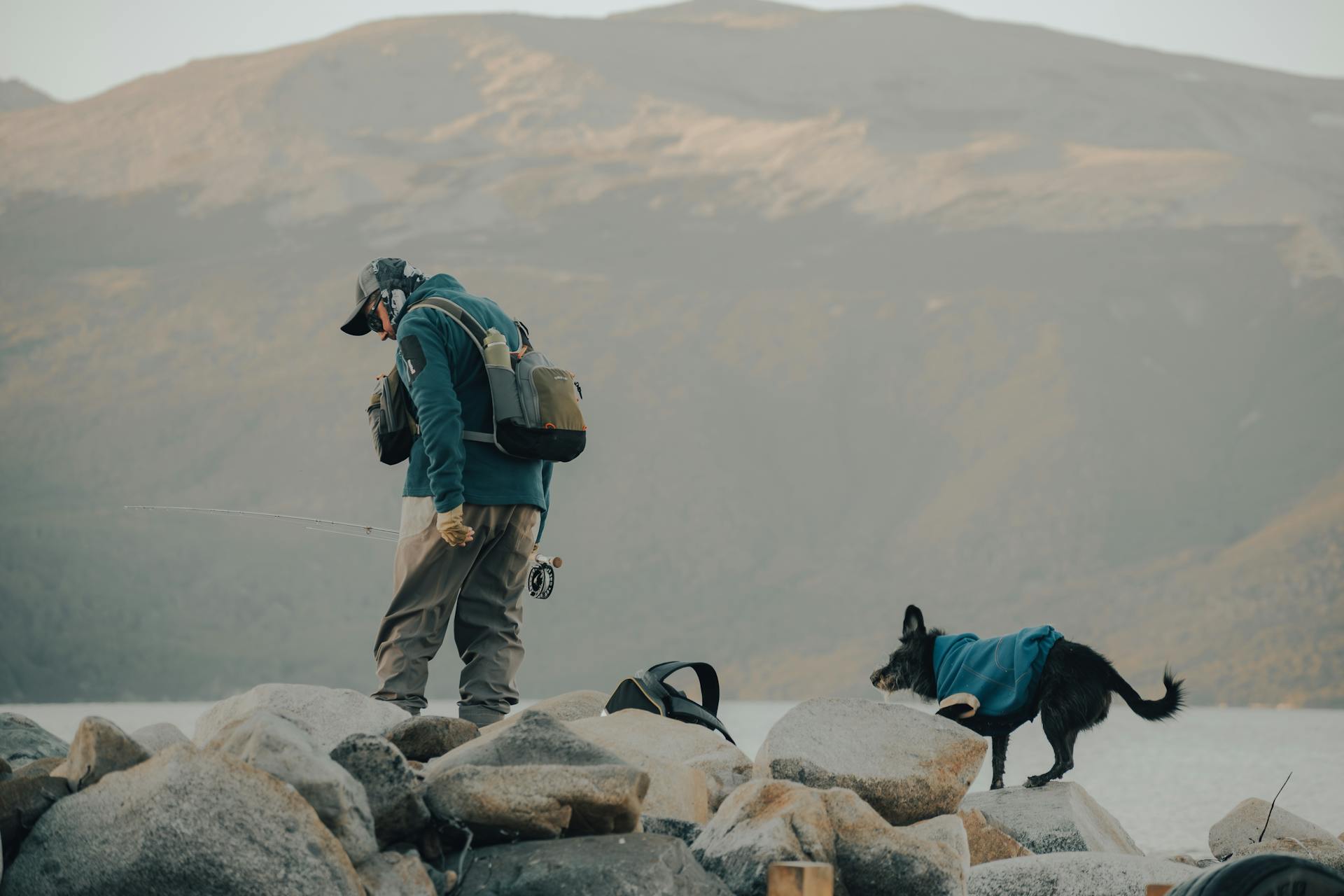
Horses are amazing creatures that have been domesticated by humans for centuries. They are used for transportation, pleasure, competition, and work. When approaching a horse you don't know, it is important to be cautious and respectful.
If you are unfamiliar with horses, it is best to ask someone who is experienced for help. They can help you determine if the horse is friendly, and offer guidance on how to approach it safely.
When you are ready to approach the horse, extend your arm out from your shoulder and let the horse sniff your hand. If the horse is interested, it will usually lower its head to sniff your hand. If the horse shies away or seems nervous, back off and give it some time to get used to you.
Once the horse seems comfortable with you, you can start rubbing its neck and head. Be sure to avoid its eyes, as horses are sensitive to being stared at. If the horse enjoys the attention, it will start to nuzzle you and may even nicker softly.
Horses are social creatures, and enjoy spending time with humans. However, it is important to remember that they are also large and powerful animals. When you are around horses, always be respectful and cautious, and you will be sure to have a enjoyable experience.
You might enjoy: What Do We Do When We Fall off the Horse?
How do you approach a horse you don't know?
When you approach a horse you don't know, it is important to be aware of your body language and keep your energy level low. Move slowly and quietly towards the horse, allowing them to sniff you and get used to your presence before attempting to touch them. It is also a good idea to have some treats with you to help gain the horse's trust. Once you have established a connection with the horse, you can begin to work on building a relationship based on mutual respect and trust.
If this caught your attention, see: Horses Trust
How do you make the horse feel comfortable around you?
When you first approach a horse, it is important to be calm and respectful. Do not move too quickly or make loud noises, as this may startle the horse. Instead, extend your hand slowly so that the horse can sniff you and become familiar with your scent. Once the horse appears comfortable, you can begin to stroke its head and neck gently.
It is also important to be aware of your body language when around horses. Avoid sudden movements and always approach them from the front or side, never from behind. Horses are very sensitive to body language and can become skittish if they feel threatened.
If you are planning on riding the horse, it is important to establish a bond of trust before mounting. Spend time grooming the horse and talking to it in a soothing voice. When you are ready to ride, mount the horse from the side or front, never from behind. Once you are in the saddle, sit up straight and hold the reins lightly. Avoid jerking the reins or using too much pressure, as this can startle the horse.
In general, horses are gentle and trusting creatures, but they can also be unpredictable. It is important to be cautious and respectful when around them. By taking the time to get to know the horse and building a bond of trust, you will be able to create a enjoyable and safe experience for both of you.
A unique perspective: What Do Horses Do When They Are Scared?
What are some things you should never do when approaching a horse?
You should never approach a horse from behind, as they may not be able to see you and could get spooked. Always approach a horse from the front or side, and speak to them in a calming voice to let them know you're there. You should also never startle a horse by making sudden movements or loud noises. Horses are very sensitive animals and can get easily scared, which can lead to them bolting or acting out. It's important to be gentle and patient when around horses, as they can sense your energy and react accordingly.
What are some signs that a horse is not comfortable with you?
There are a few key signs that a horse is not comfortable with you. These include the horse turning its head away from you, horses ears pinned back, and the horse may also shift its weight away from you. If a horse is uncomfortable with you, it may also exhibit signs of stress such as increased heart rate, gasping, sweating, and increased respiration.
How do you know if a horse is friendly?
A horse's friendliness is often reflected in its body language. Generally, a horse that is relaxed and comfortable with you will have its ears pointing forward, rather than back or pinned flat against its head. It may also blink or nuzzle you, showing that it trusts you. If a horse is scared or nervous, it may snort, paw the ground, or swish its tail.
What should you do if a horse is not friendly?
Assuming you would like tips on how to approach a horse that is not friendly, here are a few things you can do:
-Talk to the horse in a soft, calming voice -Approach the horse from its side or rear, rather than head-on -Extend your hand slowly for the horse to sniff -Don't make sudden movements -Stand still if the horse approaches you -Don't pet the horse until it is calm
If a horse is not friendly, the above tips can help you approach and hopefully tame the horse. It is important to remember to remain calm yourself, as horses can sense your fear and may react negatively if they sense you are scared. horses that are not used to being around humans may be naturally skittish, so it is important to give them time to get used to your presence. Once the horse seems relaxed, you can slowly extend your hand to pet it.
You might like: What Is Used to Control a Horse?
What are some things you should never do when petting a horse?
There are a few things you should never do when petting a horse. First, never startle a horse by quickly moving your hand towards its face. Instead, always approach a horse from the side or front, and move your hand slowly so the horse can see it coming. Second, avoid petting a horse on its hind end, as this can make them feel uncomfortable. Finally, never extend your arm over the horse's back, as this can startle them. Regardless of where you are petting the horse, always make sure to stroke in the direction the hair lies.
Frequently Asked Questions
How to get a horse to pay attention to you?
1. Gain your horse’s respect through groundwork. Do exercises that encourage your horse to think. 2. Switch up your horse’s routine and make the workout interesting for them.
How do you get a horse to stop looking at you?
One way to get a horse to stop looking at you is to bump the rein, tap your leg, or go so far as to completely stop all forward activity.
What affects a horse’s attention span?
A horse’s attention span is partly determined by the horse's genetic make-up, but it can also be affected by how the horse is treated and by how much training the rider has given the horse. Generally, horses that are well-treated and have received plenty of training will have shorter attention spans than horses who are poorly treated or who haven't had as much training.
How can you tell if your horse is spooked?
There are a few ways to tell if your horse is spooked. The most noticeable giveaway might be their ears, which may point in several different directions or stay relatively still. Other indicators might be that the horse is less responsive when ridden or that they are jumping excessively. In some cases, horses may even reared or pawed at something unexpected, signaling an anxiety response. If you're uncertain about how to handle your horse's reaction, it is always best to consult a veterinarian.
Is your horse paying attention?
One way to ensure your horse is paying attention is to be sure they are listening to what you are saying. Make sure your voice is clear and that you are looking your horse in the eye when speaking to them. You can also gesture with your hands or use body language to indicate what you want your horse to do. Sometimes it can be helpful to have a different person work with the horse while the other person speaks to them. This way, if the horse gets distracted, they won’t be able to follow along with everything that is being said. Use distractions wisely If you need your horse to stay focused, then it is important not to use distractions as a means of doing so. If you need your horse to move forward, then it is best not to have anything in their path such as a mountain over their head or another animal nearby. Instead, use positive reinforcement such as giving them hay or carrots when they are following along correctly.
Sources
- https://horselearner.com/approaching-a-horse-correctly-the-dos-and-donts/
- https://www.joyfulequestrian.com/how-to-approach-a-horse/
- https://www.quora.com/What-are-some-things-you-should-not-do-when-meeting-a-horse-for-the-first-time
- https://www.thesprucepets.com/things-you-should-never-do-to-a-horse-3885763
- https://horsevills.com/how-to-approach-a-horse/
- https://theakollection.com/dating-blog/how-to-make-a-girl-feel-comfortable-around-you/
- https://www.youtube.com/watch
- https://equinehelper.com/how-to-make-your-horse-love-you/
- https://horse-canada.com/magazine/training/approaching-horses-with-confidence/
- https://answer-all.com/science/how-do-you-approach-people-you-dont-know/
- https://www.quora.com/How-do-you-approach-a-horse-properly
- https://www.wikihow.pet/Become-More-Confident-Around-Horses
- https://cowgirlmagazine.com/how-to-approach-horse/
- https://legalprox.com/what-should-you-never-do-around-a-horse/
- https://www.veterinaryarticles.com/how-to-approach-a-horse-basic-horsemanship/
Featured Images: pexels.com


